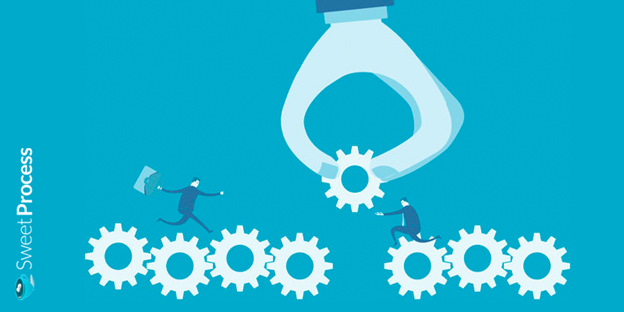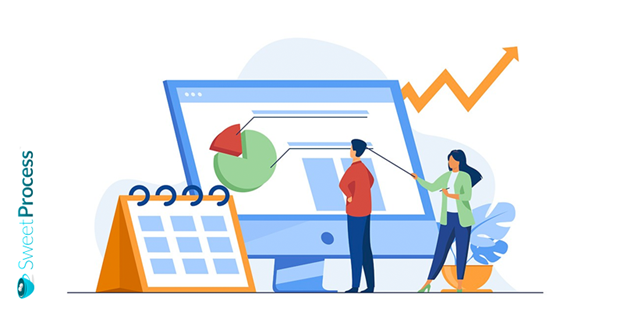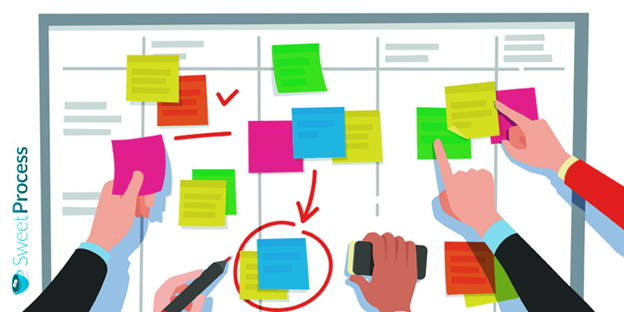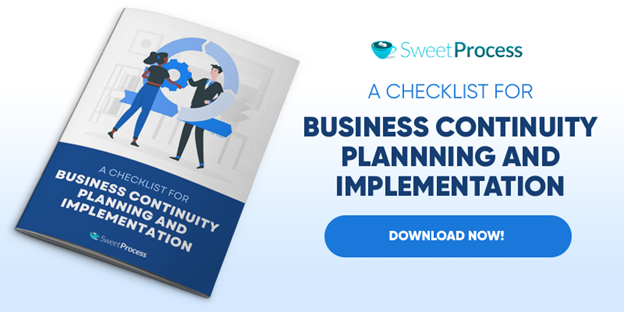Personnel Cost Involve With Plan Review in Business Continuity Plan
Business Continuity Plan: A Complete Guide

Featured Bonus Content: Get The Checklist For Business Continuity Planning And Implementation for FREE! Click Here To Download It.
Unplanned downtime costs business enterprises billions of dollars annually. According to IDC, infrastructure failure can cost a large company an average of $100,000 per hour.
However, critical application failure can ramp up the amount to between $500,000 and $1 million every hour. While your costs may not be on this scale, unplanned downtime costs time and money for every business, no matter what the size.
Most enterprises have realized that to remain afloat and thrive despite the numerous potential threats calls for the creation of effective and reliable infrastructure. This essentially means infrastructure that supports growth while protecting company data and critical applications.
Unexpected events and situations test your company's capabilities and competitiveness. If your business can manage crises effectively, it will not only survive, but its reputation and market value will soar. A business continuity plan is the key to making this a reality.
Chapter 1: What is a Business Continuity Plan?
Chapter 2: Benefits of a Business Continuity Plan
Chapter 3: What Are the Main Business Continuity Plan Goals?
Chapter 4: What Major Business Threats do Business Continuity Plans Mitigate?
Chapter 5: Features of a Business Continuity Plan
Chapter 6: Effective Business Continuity Tools
Chapter 7: How to Create a Business Continuity Plan That Works
Chapter 8: Common Challenges Faced When Creating and Implementing Business Continuity Plans
Chapter 9: Smoothen Your Business Continuity Planning and Implementation With SweetProcess
Chapter 1: What is a Business Continuity Plan?

A business continuity plan (BCP) is a document that details how company operations will continue after an unforeseen service disruption. When carried out effectively, the plan enables an organization to respond swiftly and efficiently when unpredictable events occur.
This comprehensive plan contains contingencies for every aspect of the business that the disruption might impact. They include developing alternative business processes, protecting assets, improving human resources, and safeguarding business partners.
The BCP creates a system designed to help businesses prevent and recover from potential threats. It ensures that personnel and company assets remain safe and capable of functioning quickly during a disaster.
The business continuity plan:
- Provides a summary of critical business processes plus communication strategies.
- Contains a checklist comprising supplies, equipment, data backups, and backup locations.
- Identifies plan administrators, key personnel, provides emergency responders' contact details, and backup site providers.
- Offers detailed strategies on how to maintain both short- and long-term business operations.
Here is a short video explaining what business continuity planning is all about:
Why a Business Continuity Plan is Important
Any business can suffer from disasters of varying magnitudes, from a minor breakdown to a catastrophic cyber attack. Thus, business continuity plans are crucial in allowing a company to continue operating despite threats and disruptions that could result in revenue loss, higher costs, and low profitability.
Failure to plan can spell disaster for your business. Not only can it cost you loyal clients, but your company might fail to recover from a disaster. Having an established BCP assists in reducing downtime, which helps attain sustainable improvements in business continuity, resiliency, security, crisis management, disaster recovery, and regulatory compliance.
In addition, a good BCP integrates all the key aspects of your business. As such, it:
- Protects your data
- Safeguards your brand
- Helps retain customers
- Keeps your business running
- Helps minimize operating costs
The Difference Between a Business Continuity Plan and a Disaster Recovery Plan
A disaster recovery plan forms a crucial part of the business continuity plan. It's one of the integral steps necessary in safeguarding a business against contingencies. Hence, it contains strategies for managing disruptions to IT infrastructure like servers, networks, computers, and mobile devices.
The key difference between the two plans is that a BCP focuses on keeping your business open and operational during unfavorable circumstances. Conversely, disaster recovery aims to restore full functionality (data access and IT infrastructure) as soon as possible after a disaster.
An effective disaster recovery plan should include how to re-establish employee productivity and the systems and processes necessary to meet key business needs. As such, it needs to outline manual workarounds so that normal operations can continue until regular computer systems get reinstated.
Other types of BCPs include crisis management plans, crisis communication plans, and emergency response plans.
Business Continuity Plan Misconceptions
It seems fairly obvious that all businesses should have workable continuity plans. However, the reality is that several misconceptions hamper business continuity planning by generating confusion that could limit a plan's effectiveness. Some of the most common misconstructions include the following:
1. The company is insured.
Many business owners believe that as long as they have insurance, they are covered in case of any losses. While this is true to some extent, insurance alone is not enough as a business continuity strategy. Proper insurance coverage forms an essential part of a BCP, but it cannot cover everything, such as loss of market share, customers, or delays in launching new products.
2. We have a disaster recovery plan.
A disaster recovery plan and BCP are not synonymous. The former is reactive, responding after an event has occurred. It forms part of a BCP and handles the safety and restoration of critical personnel and operational procedures after a disastrous occurrence.
On the contrary, a BCP is a proactive plan designed to prevent and alleviate risks resulting from disrupted business operations. It details the exact steps to be undertaken before, during, and after the event to maintain the organization in a financially viable position.
3. We have no time to create a continuity plan.
This perspective is wrong. Any time you spend creating and maintaining a BCP is time spent investing in your business. In the event of an interruption, your business will continue incurring fixed costs even if you are not open for business.
Therefore, the sooner you can resume normal operations, the faster you can have a successful recovery. Simply put, your business cannot afford to not have a BCP.
4. Our employees already know what to do in an emergency.
When disaster strikes, even the best employees might not know what to do. Without a system, each would respond in their own way, adding more confusion. Besides, relying on them to make correct decisions during an emergency is extremely risky because they have limited or no time to think or collaborate with colleagues.
Following a well-documented BCP ensures that all employees are trained to follow a safe, systematic, and timely recovery. In addition, identifying critical functions beforehand enables you to build a better plan before a crisis. You'll also be able to execute it better during a crisis.
BCP plans should ideally assign particular recovery activities to specific employees, who then receive training on the required procedures. Expecting all personnel to learn every step in the BCP could again create chaos during a crisis.
5. Testing a business continuity plan is unnecessary.
You need to test your business continuity plan to make certain it has no weaknesses, so check for flaws and missing steps. Besides, without regular testing, you cannot tell whether it will work when the need arises. Some might argue that testing is challenging and costly. However, a BCP that's hard to understand or implement is already a source of concern.
An ideal continuity plan should have clear recovery steps for each particular operation. Such a plan is easy to test, and this should be undertaken two to four times annually, depending on the amendments to the BCP or turnover on key roles.
BCPs should be an integral part of standard business operations. To maximize your continuity plans and eliminate any misconceptions, involve all your employees and ensure you cover every business aspect.
Chapter 2: Benefits of a Business Continuity Plan

Modern businesses are increasingly aware of their vulnerability to business continuity threats. Today's threats take many forms, ranging from crippling cyber-attacks, natural disasters, and malicious damage to accidents and unintended consequences brought on by hyper-convergence.
These vulnerabilities require a proactive approach that can offer ample protection plus a strategy to withstand disruptive incidents, such as provided by a BCP. The plans typically include ways to defend against those risks, protect critical applications and data, and recover from security breaches in a controlled, measured manner.
Below are the many benefits of having a business continuity plan:
- Saves money since your business continues running during and after a disaster
- Ensures safety of all stakeholders
- Boosts your brand's reputation
- Accelerates disaster recovery effort
- Smoothens business operations
- Minimizes disruption after a disaster
- Builds customer trust
- Helps you comply with regulatory requirements
- Protects you against unwarranted risks
- Gives you valuable business information
Let us explore some of these benefits briefly:
It Saves You Money
A business that stays closed is bound to suffer revenue loss. The longer the interruption, the more substantial the losses become. Besides, missed supply deadlines and failure to honor service level agreements (SLAs) can translate to extra fees or fines for non-compliance with regulations.
Fortunately, when your business continues running during and after a disaster, you get to save money and mitigate financial risks. Note that small businesses can also incur heavy losses after an unexpected downtime, where one hour can cost a minimum of $100,000, according to a 2019 ITIC survey.
Ensures Safety of all Stakeholders
A BCP can help keep employees and customers safe. It allows your business to continue running in the midst of a crisis while ensuring the environment is safe for both workers and clients. You will also have an uninterrupted flow of information going out to all stakeholders.
Training staff on how to respond in case of an accident or how to implement evacuation procedures also keeps everyone safe during a disaster. To prevent serious or fatal injuries, your company should have a way of sending out alerts during emergencies. Colleagues need to be able to check in too, confirming they are safe.
A fall-back plan is invaluable as it eliminates distractions that arise during emergencies. People worry about their safety and that of other colleagues and friends, leading to anxiety and a lack of focus.
Boosts Your Brand's Reputation
A company that's well-prepared to handle unexpected disruptions has no fear of appearing incompetent, bungling over what steps to take, or miscommunicating during a crisis. A BCP helps ensure a smooth recovery while safeguarding your brand value and the stellar reputation you've built over time. Furthermore, how your business responds to a crisis can affect its reputation for years.
But that's not all. Business continuity also provides your company with a competitive edge. This is because businesses that pursue business continuity are among the first to get back on their feet after an unfortunate event.
Smoothens Business Operations
A business continuity plan offers you a blueprint that makes it easier to execute business operations, increasing your chances for success. Additionally, it helps to ensure your company continues functioning smoothly after a disaster.
Workers receive access to files, applications, and any other resources they might need, and the firm continues providing products or services, thereby reducing or eliminating downtime.
Also, a strong continuity system identifies and trains crisis response managers, ensuring people are equipped to take charge and assign tasks to the team.
Builds Customer Trust
Being transparent about ongoing business continuity efforts communicates powerfully to your customers. It informs them that their needs are important, and you are putting things in place to ensure you are always available, always there for them.
Showing such high commitment to business continuity helps build confidence amongst both clients and business partners. Customers are assured of continued access to your services.
Helps You Comply With Regulatory Requirements
Having an emergency action plan (EAP) is a standard business requirement. Your business can find itself playing host to auditors at any time with non-compliance resulting in a hefty fine.
Adopting a system of business continuity standards helps your business become compliant with industry regulations. Compliance also provides your stakeholders with proof that you're running the business responsibly.
Gives You Valuable Business Information
Since business continuity planning entails putting your business under a microscope, the process helps you better understand your business processes.
Business continuity activities help produce lots of valuable company data on business operations, such as critical business units and crucial tasks, giving you a rough idea of the financial impact of a disruption.
With this information, you can focus resources on critical functions and find solutions to operational inefficiencies, thereby improving your processes and making your company more resilient. You can also use the data to plan strategic activities that propel your business forward.
Chapter 3: What Are the Main Business Continuity Plan Goals?

The first step in business continuity planning should be to identify your objectives. These provide a guideline for what the plan aims to accomplish. They pinpoint the areas that need to be addressed during the document's creation, giving all stakeholders a clearer picture of the plan's scope and purpose.
The primary goal of having a business continuity plan is to enable a company to continue supporting critical functions during a crisis while minimizing revenue losses. This allows the enterprise to run on limited resources or restricted access to the physical office while pushing to resume normal operations as soon as possible.
Here are the most common goals of a business continuity plan:
- Guide recovery teams
- Assess risks
- Analyze the potential impact of disruption
- Reveal prioritized emergency communications
- Identify disaster recovery teams
- Give step-by-step recovery procedures
- Show where specific critical assets and data are located
- Pinpoint weaknesses and suggest solutions
- Point out preventative measures
Let us explore these goals a little further:
Guide Recovery Teams
Offering guidance to recovery teams is a fundamental goal of the BCP. This is not a document to be left gathering dust. Instead, the BCP template should provide step-by-step instructions for your recovery teams during an actual emergency, disruption, or disaster.
Assess Risks
Another key aim of creating a BCP is to establish the potential threats to your business operations. Your plan should also outline the various disasters that could disrupt the business, leading to downtime.
Analyze Potential Impact of Disruption
A business impact analysis helps a company project the potential impact a disruption would have on daily operations. This captures the financial impact on the organization too, in terms of operational losses. The information received helps the business continuity planning team determine restoration timelines and prioritize the order of events.
Reveal Prioritized Emergency Communications
Business continuity planning enables your company to have ready answers to pertinent questions during an emergency. These include queries such as who informs personnel, communicates with customers, or talks to media people. It also means that recovery teams understand and appreciate their roles regarding all emergency communications.
Identify Disaster Recovery Teams
Identifying and assigning a business continuity team is essential to your continuity plan's success. The team is tasked with coordinating and implementing the plan. The plan should contain information on the team members, their contact details, show the management structure, and detail the roles to be played by each team member.
Give Step-by-Step Recovery Procedures
Your BCP will offer the exact steps to be followed in the recovery process. In the event of a disaster, your employees are unlikely to remember exactly what they need to do. While the disaster recovery team might have a general idea, having the document on hand will ensure that the team follows the precise protocols.
Show Where Specific Critical Assets and Data Are
A crucial goal of an IT BCP is to locate the storage point of critical data, backup resources like workstations or devices, plus other company assets. This ensures the recovery teams can commence recovery procedures without any confusion, even without key IT personnel.
The team also needs to identify where to move operations, how to do that, and the resources to employ. Your plan will also contain information on backup office space, if any, or how to secure one on short notice.
Pinpoint Weaknesses and Suggest Solutions
The BCP is a dynamic document that requires regular evaluation to address any weaknesses or loopholes. Since business continuity planning is an ongoing process, regular reviews allow for assessing any new risks. During the evaluation, pinpoint any scenarios that would expose operations to threats and suggest workable solutions to immediately address the situation.
Point out Preventative Measures
A BCP helps reassure all stakeholders that the company is doing all it can to prevent potential disruptions. To this end, it describes the tools, technologies, and protocols already established to ward off or alleviate the effects of an unfavorable occurrence.
Chapter 4: What Major Business Threats do Business Continuity Plans Mitigate?

Businesses the world over are grappling with numerous threats that target their day-to-day operations. While some of the threats are natural and beyond human control, others are accidental, and a few are intentional, resulting from malicious attacks.
Being in the know about possible threats to your business continuity is key to creating a comprehensive business continuity plan that can effectively mitigate the threats. Also, knowing the current trends can help you monitor, identify likely threats, and prepare better for any eventuality.
Below are some of the top business threats in today's business environment:
- Natural calamities
- Cyber attacks and data breaches
- Disease outbreaks and pandemics
- Human error (such as gas leaks, chemical explosions, fire, oil spills, or damage to machines)
- Deliberate sabotage
- Reputation and scandalous issues
- Critical utility outages
- Political change or unrest
- Supply chain disruption
- Lack of key skills
- Regulatory changes
- Terror attacks
Let's examine some of the key threats:
Natural Calamities
Losing access to your business premises because of a fire or flood means losing your entire company data. That is, if you have no cloud storage or if your disaster recovery strategies are not as efficient as required. Keeping an off-site copy of critical business data means that your employees continue working uninterrupted in the unfortunate event of a natural calamity.
Cyber Attacks and Data Breaches
Cyber attacks and data breaches take many forms, including ransomware, malware, phishing attacks, or an attack targeting network security vulnerabilities. All companies are vulnerable to such attacks, as shown by the recent attack on Goggle. Your BCP should offer security guidelines on how to prevent and cope with a cyber attack.
Disease Outbreaks and Pandemics
Widespread lockdowns over the last two years due to the COVID-19 pandemic have brought into sharp focus the need for businesses to remain open and operational at all times.
Deliberate Sabotage
Burglary or vandalism aimed at disrupting your business poses a substantial risk to on-site data. This is not restricted to your office premises, though, as it can occur wherever your employees work from—public places or at home. Deliberate sabotage could also take the form of data breaches through hacking. Customers' data could be at risk here, leading to reputational damage in the event of a severe breach.
Critical Utility Outages
Power, water, communication, and internet outages can cause significant disruptions. Some could result from human error, deliberate action, or inadequate planning. Regional power outages can be quite devastating since they can cause a total loss of essential services. This will, in turn, affect your ability to function or implement recovery strategies as most depend on the internet.
Political Change or Unrest
Political change or unrest can cause major disruptions to businesses. For instance, political change in the UK due to Brexit means that businesses need to plan how to deal with the repercussions of the UK leaving the EU.
Supply Chain Disruption
Many organizations that rely on digital applications for critical business processes lack viable backup solutions, while others rely on a single vendor or supplier. As a result, disruptions can cause severe adverse impacts on effective business processing, leading to costly losses.
Lack of Key Skills
Having improperly trained personnel means that you lack specialized people to perform critical tasks during an emergency. If the people assigned to carry out specific duties are also not trained sufficiently, this can only worsen the situation.
Chapter 5: Features of a Business Continuity Plan

Merely having a business continuity plan is not enough. An effective plan must restore regular operations as soon as possible. Every minute lost to downtime translates to revenue loss, unhappy customers who might shift to the competition, negative brand impact, and lost productivity, among others.
There are several critical components without which a BCP might fail to achieve a successful recovery after an unplanned disruption. So, what elements should characterize an ideal business continuity plan?
They include:
- Purpose and scope
- Impact analysis
- Risk assessment and mitigation
- Processes
- Strategy
- Facilities
- Technology
- Data and applications
- Training
- Organization
- Testing
- Policy information
- Glossary of terms
- Schedule for plan reviews
- Contact information
- Service level agreements
- Identification of critical functions
Let's unpack some key features next:
Purpose and Scope
Defining the purpose and scope of your plan is the first step in creating a BCP plan. Large organizations consist of several subsidiaries, and each might have different needs. You can choose to have a BCP covering each location or create one that focuses on a specific portion of the business.
Impact Analysis, Risk Assessment, and Mitigation
These processes involve identifying, appreciating, and assessing the risks that might affect your organization's operations, such as natural disasters, cyber threats, and outages. They also identify how to cushion yourself against the likely after-effects such as financial loss, property damage, business interruption, or penalties.
Training
Raising staff awareness about your BCP is important in helping them to appreciate their role in responding to disasters. Regular training sessions are therefore necessary, while staff inductions should include lessons on business continuity. The training can enhance overall company resilience.
Testing
Once your BCP is complete, you need to test it regularly. Routine testing helps you ascertain whether the plan adequately suits your needs, identify loopholes, improve processes, anticipate changes, and carry out necessary updates. It entails tabletop testing, walkthroughs, emergency enactments, and practice crisis communication, allowing you to see how personnel react in stressful conditions.
Contact Information
This is the contact details of all stakeholders, key personnel and backup, service providers, emergency responders, backup site operators, and facility managers.
Service Level Agreements (SLAs)
You need to include SLAs in your BCP. This is because some applications or processes might have a low tolerance for data loss. Examples include:
- Recovery Point Objective (RPO): Outlines the amount of data your business can afford to lose in a downtime.
- Maximum Tolerable Period of Disruption (MTPD): The point where your organization's viability will be placed at risk if crucial activities cannot resume.
- Recovery Time Objective (RTO): The desired timeline for resuming a crucial activity after a disruption.
Identification of Critical Functions
This process helps to reveal the systems and processes that are crucial in maintaining and keeping the business afloat during an unexpected disruption. They are also the kind of processes that would deliver the most harm to the business overall in terms of revenue loss, dented reputation, or the company's ability to operate.
Therefore, you might want first to establish your company's primary priorities and focus your recovery efforts there. These may include information security, core functions, data protection, and access management.
Chapter 6: Effective Business Continuity Tools

As we have seen, businesses contend with a wide array of threats that can bring their operations to a halt at a moment's notice. Consequently, companies need to prepare for any eventuality by acquiring effective business continuity tools that can lessen disruption, enabling them to sustain operations despite the interruption.
That said, it's essential to get proper tools, as this facilitates efficient execution of your plan and allows for a swift and organized response in a crisis. Proper tools also ensure you keep communicating and operating without interruptions or losing vital data. In other words, business continuity tools are complementary software for your BCP.
To help you identify the best tools for your business, here's a list of essential business continuity tools to implement alongside your BCP:
- Communication software
- BCP creation tools
- Tools to help with documentation
- Backup tools
- Software for internal auditing
- Disaster recovery tools
- Physical tools
- Other tools
Here's a breakdown of the business continuity tools:
Communication Software
Effective communication is vital in maintaining operational stability. As such, you need to perform regular tests on your company's crisis communication systems to determine whether there are any issues.
Streamline your communication by using tools that facilitate internal and external communication. You need secure and direct messaging to personnel, recovery teams, shareholders, and suppliers to promote trust and maintain control of assets. Ideal tools here include Convene App and Flock.
Mass communication tools like Crises Control or InformaCast are also suitable for emergencies. They are excellent for alerting all concerned parties about an emergency speedily and efficiently.
Business Continuity Plan Creation Tools
There are tools designed specifically to build data-based BCPs. Such one-stop-shop preparatory solutions help you develop comprehensive plans that streamline the process of company data collection and evaluation.
The tools assist in analyzing data, identifying risks, testing, and administrative activities, making it easier for you to manage your business continuity program. Examples include Orbit4BC and ResilienceONE.
Tools to Help With Documentation
You can create your BCP on word processing software like Microsoft Word. Swift and secure access to the BCP in an emergency is a major consideration and Dropbox or Google Docs are cloud-based solutions that can help make this possible.
However, a better solution is to go for a robust tool that allows you to build an easy-to-read document that's customizable to your company's needs. An excellent tool here is SweetProcess.
Backup Tools
Backup solutions allow data storage in off-site locations, facilitating business continuity. They provide data protection, replication, access, recovery, migration, automatic backups, and information management.
They also enable virtual storage, optimize efficiency across networks and allow for the continuous availability of key data, ensuring business continuity. Good examples include Altaro VM Backup and Unitrends.
Software for Internal Auditing
One way to make your business continuity planning effective is to evaluate your assets thoroughly. This helps to uncover any vulnerabilities, pain points, and irregularities in the infrastructure.
The goal of carrying out an internal audit of your BCP is to assess its scope. The audit also evaluates how outlined procedures can safeguard the company in a crisis. You can perform the internal audit manually by evaluating the processes and confirming their relevance. However, for a more comprehensive audit, opt for specialist BCP auditing applications like Onspring and Open-AudIT.
Disaster Recovery Tools
Safeguarding IT assets during a disaster is fundamental to any viable business continuity program. This might entail data recovery, data backup, infrastructure reinstallation, or creating a cloud environment that simulates corporate assets to provide essential services.
Disaster recovery tools focus on mitigating interruptions on IT infrastructure. They help restore crucial systems quickly, enabling your company to resume core operations while minimizing losses. Recommended tools include Azure Site Recovery and Ekco Protect.
Physical Tools
These too can alleviate the effects of certain disasters, thus promoting business continuity. Fire suppression tools like extinguishers and fire exits help safeguard computer equipment and data from fire while backup power sources support companies through power outages.
Other Tools
These include:
- Cold site: a basic structure where staff can work after a disaster.
- Hot site: a secondary business location that always maintains up-to-date data copies.
- Point-in-time copies: These make copies of the complete database regularly.
- Instant recovery copies: These take snapshots of whole virtual machines, enabling data restoration from the backups.
- Virtualization: This is a method of backing up a viable replica of a company's total computing environment.
Business continuity tools are meant to make your business continuity program more efficient. Put simply, they are not a fix for a poorly-designed BCP. When selecting your tool, always start by identifying your need, i.e., documentation or data recovery, then look for the tool that best addresses it.
Chapter 7: How to Create a Business Continuity Plan That Works

Creating an effective BCP is no walk in the park. It needs to be a well-thought-out document given its critical role in running a resilient business. Here are the steps you need to take:
Determine Your Approach
Decide how your company plans to manage its response to disruptions, the plan's coverage, and the type of plans to use depending on your firm's size and complexity.
Build a Team
Create a core team tasked with preparing the BCP and training the support team. Pick key staff in IT, security, finance, and communications. Have a contact list detailing the names, titles, and contact details of the key people in the BCP. Finally, clearly outline their roles and responsibilities so everyone understands what's expected of them in a crisis and establish proper communication channels.
Gather the Necessary Information
This involves getting all the information necessary to perform the next step—risk analysis. Use your team here to get as much information as possible.
Do a Business Impact Analysis (BIA)
Business impact analysis helps you pinpoint threats to your operations, staff, financial well-being, and reputation. It allows you to determine and prioritize processes bearing the highest impact on the company's finances and operations. Determine what activities need immediate resumption, the timelines, performance level, and resources needed.
Conduct a Gap Analysis to Identify the Resources Needed
Your BIA might have uncovered the variance between the resources at hand and what is required for recovery. Conducting a gap analysis establishes the gap between current resources and recovery requirements, recovery options, and the strategies agreed upon. After the analysis, you can investigate and execute recovery strategies.
Point Out Your Brand's Critical Functions
Your company's critical functions help to maintain essential services during a crisis. You want to prioritize them by starting your recovery efforts here. They might include data protection, access management, order fulfillment, inventory management, customer service, and e-commerce platform functionality.
Assess Risk and Consider Mitigation Strategies
Evaluate the risks that pose the highest threat to your organization and brainstorm potential mitigation strategies. Mitigation activities should aim at reducing the severity of an interruption and should address emergency response, resource management, staff communications, and public relations.
Establish a Business Continuity Process
The BIA results will inform the business continuity requirements. The continuity process covers prevention, response, and recovery strategies. It entails identifying backup suppliers, establishing safety protocols, alternate work locations, work-at-home strategies, outsourcing, and the use of manual working procedures.
Create the Plan Structure
Start by collecting all the information required to respond to an interruption, then write down step-by-step procedures. These are the tasks and processes that staff must perform to keep your business in operation. Create a simple plan outlining the minimum resources necessary for business continuance, potential relocation sites, and the staff and resources required to achieve this.
Implement and Train
Once your plan is ready, implement it. Conduct training for the planning team to familiarize themselves with their roles and obligations and for the rest of the staff to learn what to do in an emergency.
Test and Optimize Frequently
Testing your BCP is essential as it enables you to validate it as well as identify gaps. Continuous improvement happens when you establish your findings via a live exercise then act upon them. Conduct annual tests and exercises or after a significant change to ensure relevant, complete, and accurate procedures.
Chapter 8: Common Challenges Faced When Creating and Implementing Business Continuity Plans

A BCP is an invaluable document in protecting your company and minimizing disruptions. Unfortunately, it's not very easy to develop one due to the many challenges encountered. One way to overcome the obstacles is to appreciate their existence, then formulate strategies to resolve them. Here is a list of the most common challenges.
The process can be highly complex
Creating a BCP can seem overwhelming, especially in a large organization with complex systems and processes. As the business owner, you need to create individual plans for subsidiaries in different locations or a plan that addresses the entire organization. Planners also need to be familiar with basic business continuity planning concepts.
Planning and implementation can be expensive
This is because you need to avail resources that are necessary but not currently available, or hire a consultant to assist. Implementation also entails buying business continuity solutions and templates, which tend to be pricey.
Poor staff involvement may slow down the process
All staff need to have a fair understanding of the BCP. To ensure their commitment, involve them in the planning process and provide training. This will inform them what they need to do in a crisis.
Lack of executive support can be a critical issue
If management is not keen to invest in a BCP, you might not get the resources you need to craft a concrete plan. To get their buy-in, tell them the benefits of having one and the potential damage that lack of a BCP can cause. You can use real case studies.
Insufficient technology can make the plan ineffective
A BCP relates, to a large extent, to technical issues like technology failure, data loss, and communication breakdown. Resolving these challenges requires specific tools and the budget to acquire the same. Try to get comprehensive tools that cover more than one function or process to maximize your technology.
Not routinely testing, even after top-notch planning, can reduce impact
Routine testing using different scenarios helps you determine your BCP's viability, identify inherent weaknesses and areas for improvement.
Lack of constant training reduces the long-term effect
Constant training is necessary as the BCP keeps changing with new updates or new threats arise. Besides, new employees need to be put on board with the program.
Reliance on outdated templates can hinder the ability to mitigate new threats
Templates make creating a BCP easier, but they must add value and be customizable to the organization. Otherwise, the plan will be riddled with irrelevant material; hence, it might be hard to read and not actionable. Any tool used should not dictate what's to be included in the program. Rather, it should complement the BCP.
A plan that's too generic may not work for your business
This happens when planners fail to incorporate existing strategies well or are unaware of them. Every business is unique, so create a plan that suits your company's specific circumstances in terms of the business environment, potential threats, and critical business operations.
Lack of focus can hinder the creation process
A BCP can lose focus and become ineffective if recovery requirements are poorly defined. The plan should describe the recovery process clearly, the people involved, recovery performance levels, and how to operate during recovery.
Creating a plan for the wrong audience may decrease efficiency
Assigning the task of documenting the BCP or delegating business continuity activities to unqualified people is the root of this challenge. The core planning team should have experienced team leaders, key staff in each department, and subject matter experts to guide the process.
Chapter 9: Smoothen Your Business Continuity Planning and Implementation With SweetProcess

Are you wondering how you can smoothen your business continuity planning and implementation? Look no further. SweetProcess is an invaluable tool that can take the headache out of developing and implementing your BCP. Read the below case studies to get an idea of what SweetProccess can do.
How Streamlining Business Operations Helped Create a Safer Environment Post-COVID Shutdown
Dr. Olesya Salathe, dentist, and Alex Jacks, office manager, proprietors of The Dentist Off Main, had a passion for providing excellent dental services to their patients but encountered one problem. With COVID-19, the duo needed to ensure the clinic offered maximum safety. They desired to streamline their business operations, but using Word documents wasn't helpful.
Thankfully, they discovered SweetProcess, which enabled them to operate safely post COVID restrictions and boosted their staff's efficiency. It helped create effective documentation for patient care, eased employee training and onboarding, and created an accessible knowledge base.
Dr. Olesya's recommendation? Find key team members on your team. "You can't do it alone. You can start identifying the most problems and start with that process first."
Texas DFPS Streamlines Its Operations to Process 40,000+ Requests Annually
Justin Compton, manager II, and Heather MacLean, management analyst II, from the Texas Department of Family and Protective Services, process 40,000+ record requests annually.
The sheer volumes demand accurate documentation, but after trying different basic workflow software, it was clear their work required a more effective system like SweetProcess. This system eliminated complexity, streamlined operations, and simplified workflow, making the agency more efficient. Heather confesses:;
"I really like SweetProcess because it lets you build a process machine. It lets you plug everything in so that it's all cohesive and yet independent."
The key challenge was the information was kept in different places, making access difficult and complex. Also, updating the manuals was cumbersome and took too long, a major setback for an agency required to make quick decisions on custody or childcare. SweetProcess sorted all that. It also made employee training easier and created a remotely accessible knowledge base with controlled access.
Atlantic Sapphire Transfers Operational Knowledge Between Facilities by Documenting Business Processes
Stanley Kolosovskiy's job as technology process coordinator was to ensure that Atlantic Sapphire's business operations were optimized. But despite his IT background, he struggled to use the existing software to create an effective workflow system for his colleagues and boost their performance.
The Denmark-based salmon-farming company was opposed to environmental pollution resulting from air freighting salmon in non-sustainable packaging, preferring to distribute them by road transportation instead.
However, producing salmon locally and sustainably meant strict adherence to operational procedures. The employees needed standard operating procedures to guide them in performing tasks. Stanley sourced a better alternative and found SweetProcess, a more intuitive, easy-to-use software that fostered an eco-friendly environment, expediting their move to the United States.
SweetProcess streamlined process documentation, made employee onboarding straightforward, and decentralized the company's knowledge base. Stanley was pleased.
"I just want to implement more SweetProcess everywhere because this means everybody knows what's going on. Everybody has the right training…incorporating data collection…and being able to get more reports out of the data that's collected."
You too can streamline your procedures, making it easier to resume normal operations after an interruption. Sign up for the SweetProcess free trial and experience how it works. No credit card required!
Conclusion: Create the Shield Your Business Needs to Survive for Generations
Today's businesses boast digitally interconnected networks that demand uninterrupted connectivity to run operations. This means that whenever connectivity gets disrupted, business halts. This state of affairs is both expensive and unsustainable. It can also cost you your business since availability, reliability, and strong security are all key in running a successful business.
Fortunately, SweetProcess can help keep your business open during and after a crisis by ensuring all critical processes keep running. Join the free trial (no credit card required) and see the impact SweetProcess can make. Don't leave without downloading the free Business Continuity Planning and Implementation Checklist below!

Get Your Free Systemization Checklist

5 Essential Steps To Getting a Task Out of Your Head and Into a System So You Can Scale and Grow Your Business!

desrosierssympurs.blogspot.com
Source: https://www.sweetprocess.com/business-continuity-plan/
0 Response to "Personnel Cost Involve With Plan Review in Business Continuity Plan"
Postar um comentário